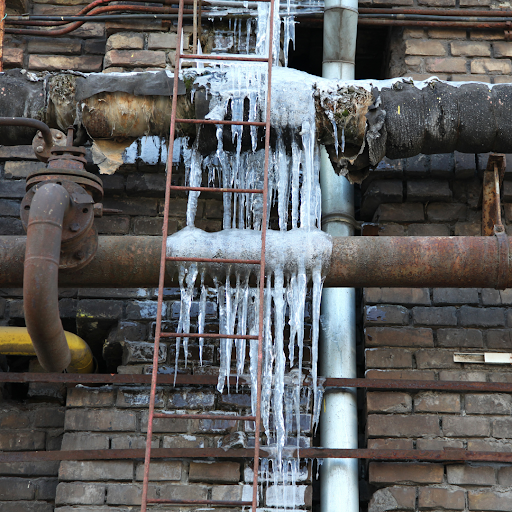Guidance for Avoiding Frozen Plumbing in Cold Weather: Professional Advice
Guidance for Avoiding Frozen Plumbing in Cold Weather: Professional Advice
Blog Article
Listed here further down yow will discover a good deal of sound information around 6 Ways to Prevent Frozen Pipes.

Winter can wreak havoc on your pipes, especially by freezing pipes. Below's exactly how to stop it from taking place and what to do if it does.
Introduction
As temperature levels decrease, the danger of frozen pipelines boosts, possibly resulting in pricey fixings and water damage. Recognizing how to stop icy pipes is critical for homeowners in cold environments.
Avoidance Tips
Protecting prone pipelines
Wrap pipes in insulation sleeves or use warm tape to shield them from freezing temperatures. Concentrate on pipes in unheated or external locations of the home.
Home heating techniques
Maintain indoor areas appropriately heated up, especially areas with plumbing. Open closet doors to allow warm air to circulate around pipelines under sinks.
Exactly how to recognize icy pipes
Try to find decreased water flow from taps, uncommon odors or sounds from pipelines, and noticeable frost on subjected pipelines.
Long-Term Solutions
Architectural adjustments
Take into consideration rerouting pipelines away from exterior walls or unheated locations. Add additional insulation to attic rooms, basements, and crawl spaces.
Updating insulation
Invest in high-grade insulation for pipelines, attics, and walls. Correct insulation helps preserve constant temperature levels and lowers the risk of icy pipelines.
Securing Outside Plumbing
Garden pipes and exterior taps
Detach and drain yard pipes before wintertime. Mount frost-proof faucets or cover outdoor faucets with shielded caps.
Comprehending Icy Pipes
What triggers pipelines to ice up?
Pipelines ice up when revealed to temperature levels below 32 ° F (0 ° C) for prolonged durations. As water inside the pipelines ices up, it broadens, taxing the pipeline walls and potentially creating them to rupture.
Dangers and damages
Frozen pipes can cause supply of water interruptions, home damage, and costly fixings. Burst pipelines can flooding homes and trigger comprehensive architectural damage.
Signs of Frozen Pipes
Determining frozen pipelines early can prevent them from rupturing.
What to Do If Your Pipes Freeze
Immediate actions to take
If you think icy pipes, maintain faucets available to soothe pressure as the ice thaws. Use a hairdryer or towels soaked in hot water to thaw pipes gradually.
Final thought
Preventing frozen pipelines requires aggressive procedures and quick reactions. By comprehending the causes, signs, and safety nets, house owners can shield their pipes during winter.
5 Ways to Prevent Frozen Pipes
Drain Outdoor Faucets and Disconnect Hoses
First, close the shut-off valve that controls the flow of water in the pipe to your outdoor faucet. Then, head outside to disconnect and drain your hose and open the outdoor faucet to allow the water to completely drain out of the line. Turn off the faucet when done. Finally, head back to the shut-off valve and drain the remaining water inside the pipe into a bucket or container. Additionally, if you have a home irrigation system, you should consider hiring an expert to clear the system of water each year.
Insulate Pipes
One of the best and most cost-effective methods for preventing frozen water pipes is to wrap your pipes with insulation. This is especially important for areas in your home that aren’t exposed to heat, such as an attic. We suggest using foam sleeves, which can typically be found at your local hardware store.
Keep Heat Running at 65
Your pipes are located inside your walls, and the temperature there is much colder than the rest of the house. To prevent your pipes from freezing, The Insurance Information Institute suggests that you keep your home heated to at least 65 degrees, even when traveling. You may want to invest in smart devices that can keep an eye on the temperature in your home while you’re away.
Leave Water Dripping
Moving water — even a small trickle — can prevent ice from forming inside your pipes. When freezing temps are imminent, start a drip of water from all faucets that serve exposed pipes. Leaving a few faucets running will also help relieve pressure inside the pipes and help prevent a rupture if the water inside freezes.
Open Cupboard Doors
Warm your kitchen and bathroom pipes by opening cupboards and vanities. You should also leave your interior doors ajar to help warm air circulate evenly throughout your home.

As a keen reader about How To Avoid Freezing Pipes, I imagined sharing that chunk was a good idea. Enjoyed reading our post? Please share it. Help another person locate it. Thanks so much for your time spent reading it.
Visit Our Website Report this page